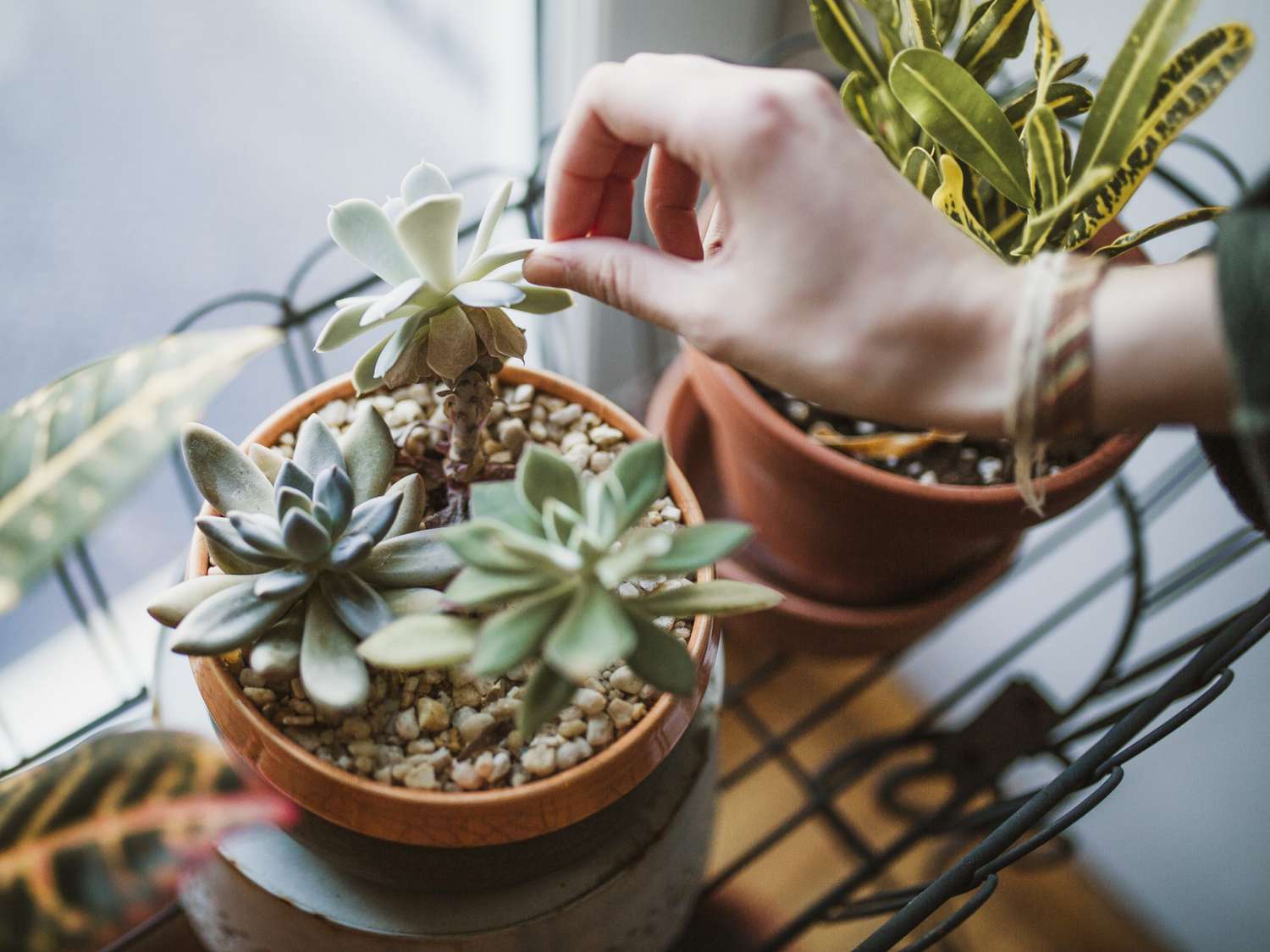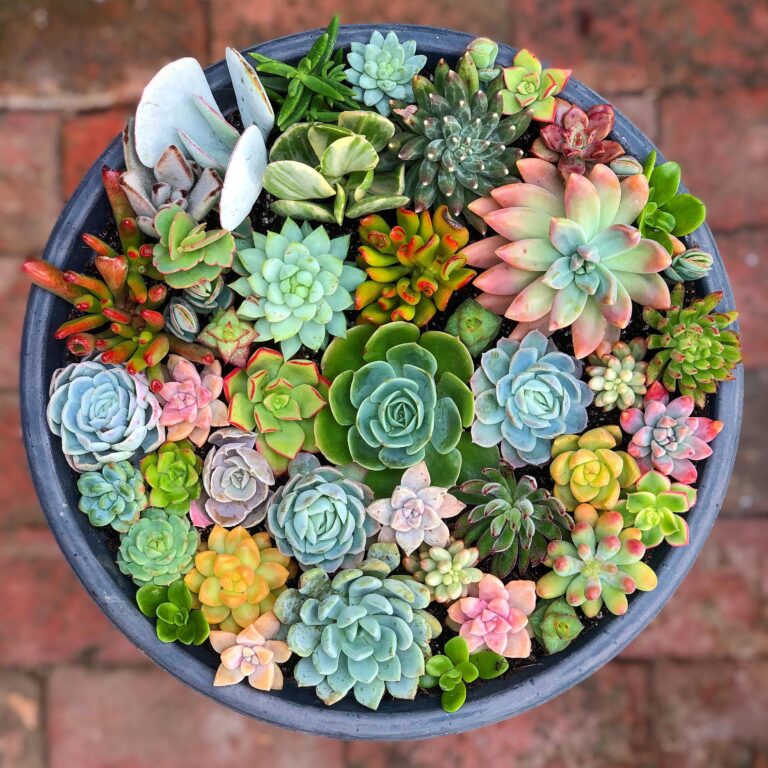How Do You Take Care of a Succulent? Expert Tips for Healthy Growth

Succulents are among the most popular houseplants due to their low-maintenance nature and striking appearance. With their thick, fleshy leaves that store water, succulents are perfect for anyone looking to bring some greenery into their space without the hassle of frequent care. If you’ve recently acquired a succulent or are thinking about adding one to your collection, you may be wondering, “How do you take care of a succulent?”
In this expert guide, we will answer this common question and provide you with everything you need to know to ensure your succulent thrives. From watering techniques to the best soil types and common care mistakes, we’ve got you covered. So let’s dive in and discover how to properly care for your succulent and keep it looking vibrant and healthy.
What Are Succulents?
Before we answer the question “How do you take care of a succulent?” it’s important to understand what makes succulents so special. Succulents are a diverse group of plants that store water in their leaves, stems, or roots, allowing them to thrive in dry conditions. These plants come in various shapes, sizes, and colors, with popular varieties including Aloe Vera, Jade Plants, and Echeveria.
Succulents have adapted to survive in arid environments, making them ideal for people with busy lifestyles or those new to gardening. However, despite their tough exterior, succulents still require specific care to grow well, and understanding their needs is key to success.
How Do You Take Care of a Succulent? The Essential Factors
1. Choosing the Right Pot for Your Succulent
When learning how do you take care of a succulent, selecting the right pot is essential. The pot should have drainage holes to ensure excess water can escape, preventing water from accumulating at the roots. Succulents are sensitive to overwatering, and stagnant water can cause root rot.
Opt for pots made of breathable materials like terracotta, as they help regulate moisture levels and allow air circulation around the roots. Plastic pots, while lightweight, tend to retain more moisture and can make it harder for the soil to dry out.
2. Light Requirements for Succulents
One of the key factors in how do you take care of a succulent is ensuring that your plant gets enough light. Succulents thrive in bright, indirect light. Ideally, they need around 6 hours of sunlight per day to remain healthy.
If you are growing succulents indoors, place them near a south- or west-facing window where they will receive adequate light. If you don’t have access to natural light, you can also use grow lights to supplement their needs. Be cautious not to expose your succulent to direct, harsh sunlight immediately after bringing it inside, as this can lead to sunburn.
3. Watering Your Succulent Correctly
Watering is one of the most important aspects of how do you take care of a succulent. Overwatering is a common mistake that can lead to root rot, while underwatering can cause your plant to wilt and become unhealthy.
Succulents prefer to be watered deeply but infrequently. The key is to let the soil dry out completely between waterings. Typically, succulents need water once every 1-2 weeks during the growing season (spring and summer) and less frequently during the dormant season (fall and winter).
To check if your succulent needs water, stick your finger about 2 inches into the soil. If it feels dry, it’s time to water. When you do water, be sure to water at the base of the plant and allow the water to drain out of the pot.
4. Proper Soil for Succulents
Another important factor in how do you take care of a succulent is the type of soil used. Succulents need soil that is well-draining to prevent water from accumulating around the roots. Cactus or succulent soil mixes are designed to provide excellent drainage and avoid moisture retention.
If you’re planting succulents in your garden, make sure the soil is sandy or gritty to allow water to flow through quickly. If your garden soil is heavy, mix it with sand or perlite to improve drainage.
5. Temperature and Humidity Preferences
Succulents are typically well-suited to warm, dry environments. Most succulents thrive in temperatures between 60°F and 85°F (15°C to 29°C). They prefer a dry atmosphere, so it’s important to avoid placing your succulents in areas with high humidity, such as bathrooms or kitchens.
During the winter months, when succulents enter dormancy, keep them in a slightly cooler area, but avoid letting the temperature drop below 50°F (10°C), as this can harm the plant.
Common Mistakes When Caring for Succulents
While succulents are relatively easy to care for, beginners often make a few common mistakes. Here’s how to avoid them:
1. Overwatering
As mentioned, overwatering is the number one mistake when learning how do you take care of a succulent. Overwatering leads to root rot, which can quickly kill your succulent. Always allow the soil to dry out completely between waterings, and ensure that your pot has proper drainage.
2. Lack of Sunlight
Succulents require plenty of light to thrive. A lack of sunlight can cause them to become leggy and weak. If your succulent is not getting enough sunlight, consider moving it to a sunnier location or investing in a grow light to meet its needs.
3. Using the Wrong Soil
Using regular potting soil that doesn’t drain well can cause your succulent to suffocate and drown. Always use a well-draining soil mix specifically designed for succulents or cacti.
4. Incorrect Temperature or Humidity
Succulents prefer warm temperatures and low humidity. Avoid placing them in areas with drafts or high moisture levels, as this can lead to problems like mold and fungal infections.
How Do You Take Care of a Succulent Through Propagation?
If you love your succulents and want to multiply them, propagation is an excellent way to grow new plants from your existing ones. Here’s how to propagate succulents:
1. Leaf Cuttings
To propagate a succulent from a leaf cutting, simply remove a healthy leaf from the plant, allowing the cut end to callus over for a few days. After it’s healed, place the leaf on top of a well-draining soil mix, and mist it lightly. Over time, roots will form, and a new plant will start growing.
2. Offsets
Many succulents, like the Echeveria, produce small offsets or “babies” around the base of the plant. You can gently remove these offsets and replant them in their own pots. This is a simple and effective way to grow new succulents.
Seasonal Care for Succulents
Succulents go through different growth phases depending on the season. Understanding how to care for your succulent year-round will help it thrive.
Spring and Summer Care
During the growing season, succulents require more water and nutrients to support their growth. Water regularly but allow the soil to dry out completely between waterings. Fertilize your succulent once a month with a diluted cactus fertilizer to encourage healthy growth.
Fall and Winter Care
As succulents enter their dormant phase during the colder months, their growth slows down. During this time, reduce watering and avoid fertilizing. Keep your succulents in a cooler area with indirect light to support their dormant phase.
Troubleshooting Common Problems
1. Leggy Growth (Etiolation)
If your succulent becomes tall, thin, and stretched out, it may be a sign that it is not getting enough light. Move it to a sunnier location and ensure it receives at least 6 hours of light per day. You can also trim the leggy growth and propagate the cuttings to start fresh.
2. Yellowing Leaves
Yellowing leaves can be a sign of overwatering or root rot. If the leaves are soft and mushy, it’s likely overwatered. Remove the affected leaves and ensure the soil is well-draining and not too moist.
Conclusion
Now that you know how do you take care of a succulent, you’re ready to enjoy these low-maintenance, beautiful plants in your home or garden. Succulents are resilient and easy to care for, but they do require attention to their light, water, soil, and temperature needs. By following the expert tips outlined in this guide, you’ll be able to grow healthy, vibrant succulents that will add charm to any space.
Remember, the key to success is understanding the specific needs of your succulent species. With the right care, your succulents will thrive and continue to bring beauty and joy into your life.






